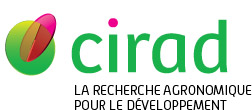Tao Hsiao-Hang, Donough Christopher, Gerendas Joska, Hoffmann Munir P., Cahyo Angger, Sugianto Hendra, Wandri Ruli, Rahim Gatot Abdul, Fisher Myles, Rötter Reimund P., Dittert Klaus, Pardon Lénaïc, Oberthür Thomas. 2018. Fertilizer management effects on oil palm yield and nutrient use efficiency on sandy soils with limited water supply in Central Kalimantan. Nutrient Cycling in Agroecosystems, 112 (3) : 317-333.
|
Version publiée
- Anglais
Accès réservé aux personnels Cirad Utilisation soumise à autorisation de l'auteur ou du Cirad. Tao2018NCA.pdf Télécharger (1MB) |
Quartile : Q2, Sujet : SOIL SCIENCE
Résumé : Identifying optimal fertilizer management to ensure high nutrient use efficiency is important to reduce negative environmental impacts in oil palm (Elaeis guineensis) cultivation. A 4-year fertilizer trial was established in an oil palm plantation, located at a sandy area with occasional monthly water deficit in Central Kalimantan. We examined the responses of oil palm yield and nutrient use efficiency to fertilizer application frequency (standard frequency of 1–2 times yr−1 versus 4 times yr−1) and rate (standard rate of 136, 12, and 200 kg ha−1 yr−1 of N, P and K, respectively versus 80% of standard rate). There were no treatment effects on annual yield in fresh fruit bunch, bunch number, or individual bunch weight. Increasing fertilizer frequency did not increase nutrient use efficiency at the last 2 years of the trial. In contrast, reducing fertilizer rate resulted in higher nutrient use efficiency in K, compared to the standard treatment and increasing fertilizer frequency. Average concentrations of N, P, K, Mg, Ca, and Cl in leaflet under all treatments were above critical levels both in the beginning and at the end of the trial. Monthly yield in fresh fruit bunch correlated positively with soil water balance with correlation coefficients of 0.24–0.29, during the developmental period of inflorescence sex differentiation at 28–30 months before fruit maturity. Our study provides useful information for fertilizer management optimization in sandy areas with occasional water deficit, corresponding to most of the new expansion areas of oil palm in Southeast Asia.
Mots-clés Agrovoc : Elaeis guineensis, fertilisation, transport des substances nutritives, rendement des cultures, besoin en eau, sol sableux, déficit d'humidité du sol
Mots-clés géographiques Agrovoc : Kalimantan, Indonésie
Classification Agris : F04 - Fertilisation
F61 - Physiologie végétale - Nutrition
K10 - Production forestière
Champ stratégique Cirad : Axe 1 (2014-2018) - Agriculture écologiquement intensive
Auteurs et affiliations
- Tao Hsiao-Hang, IPNI (MYS) - auteur correspondant
- Donough Christopher, IPNI (MYS)
- Gerendas Joska, Biosynex Deutschland GmbH (DEU)
- Hoffmann Munir P., Georg-August University of Göttingen (DEU)
- Cahyo Angger, PT Sampoerna Agro (IDN)
- Sugianto Hendra, IPNI (MYS)
- Wandri Ruli, PT Sampoerna Agro (IDN)
- Rahim Gatot Abdul, PT Sampoerna Agro (IDN)
- Fisher Myles, CIAT (COL)
- Rötter Reimund P., Georg-August University of Göttingen (DEU)
- Dittert Klaus, Georg-August University of Göttingen (DEU)
- Pardon Lénaïc, CIRAD-PERSYST-UPR Systèmes de pérennes (FRA)
- Oberthür Thomas, IPNI (MYS)
Source : Cirad-Agritrop (https://agritrop.cirad.fr/590442/)
[ Page générée et mise en cache le 2024-09-19 ]




